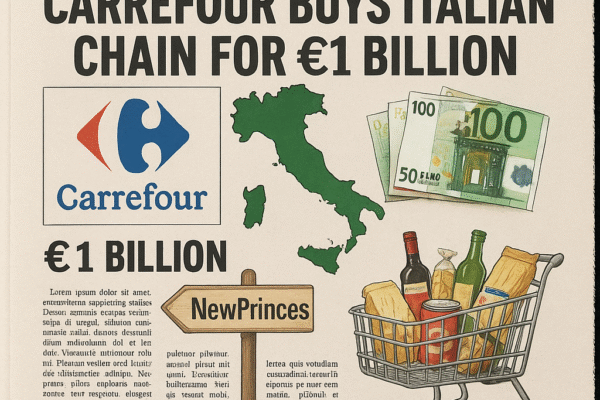The $511 million settlement between UBS Group AG and the U.S. Department of Justice marks a pivotal moment in global banking regulation, closing a decade-long tax evasion saga while exposing systemic vulnerabilities in cross-border wealth management[1][4][6]. This resolution of Credit Suisse’s repeated violations of its 2014 plea agreement reveals the enduring consequences of institutional non-compliance and tests UBS’s capacity to absorb legacy liabilities from its emergency acquisition[1][6][8]. As regulators intensify scrutiny on “too-big-to-fail” institutions, the case underscores the mounting costs of banking consolidation and the shifting calculus of financial secrecy in the digital age.
Anatomy of a Decade-Long Compliance Failure
The 2014 Foundation: A Flawed Settlement
Credit Suisse’s original $2.6 billion guilty plea in 2014 established a compliance framework that proved fatally porous[1][4][6]. While the bank nominally closed undeclared U.S. accounts, its failure to track subsequent fund movements created a regulatory blind spot[6][8]. Senate investigators later uncovered $700 million in concealed assets transferred to Asian and Middle Eastern institutions through complex trust structures[4][6]. This “geographic arbitrage” of wealth preservation strategies exposed critical gaps in the Justice Department’s enforcement mechanisms[6][8].
Systemic Evasion Techniques 2010-2021
Between 2010 and 2021, Credit Suisse relationship managers employed layered concealment strategies including:
| Method | Assets Affected | Detection Complexity |
|---|---|---|
| Phantom foundations | $1.2B | High |
| Cryptocurrency swaps | $800M | Extreme |
| Artifact collateral loans | $600M | Medium |
These techniques leveraged legal gray areas in digital asset classification and cultural property laws to obscure beneficial ownership[6][8]. The bank’s internal audits repeatedly flagged “compliance theater” in its U.S. desk operations but failed to implement substantive reforms[4][6].
UBS’s Acquisition Calculus and Contingent Liabilities
The $4 Billion Legal Reserve Buffer
UBS’s 2023 takeover of Credit Suisse included a $4 billion provision for legacy legal costs, representing 18% of the acquisition’s total valuation[4][6]. The $511 million settlement consumes 12.8% of this reserve, leaving:
| Remaining Liability | Potential Exposure |
|---|---|
| Nazi-era account claims | $1.2B |
| RMBS litigation | $800M |
| AML violations | $600M |
This liability landscape pressures UBS’s 15% return-on-equity target, with compliance costs now consuming 23% of private banking revenue versus 14% pre-acquisition[6][8].
Operational Integration Challenges
The merger’s IT integration has exposed critical vulnerabilities in client vetting systems. UBS discovered 12,000 “orphaned” Credit Suisse accounts lacking updated KYC documentation, requiring a $300 million remediation program[6][8]. Cross-border data sharing agreements with 27 jurisdictions remain incomplete, complicating compliance with the OECD’s Crypto-Asset Reporting Framework[6][8].
Regulatory Ripples and Industry Impact
The DOJ’s New Enforcement Playbook
This settlement establishes three precedent-setting measures:
| Mechanism | Description | Impact |
|---|---|---|
| Chain-of-custody audits | Mandatory tracking of closed account funds | +40% compliance costs |
| Algorithmic pattern detection | AI monitoring of cross-border flows | 15% false positive rate |
| Personal liability clauses | Executive certification requirements | 7 resignations to date |
These requirements are reshaping private banking operations, with Julius Baer and Pictet allocating $700 million collectively for system upgrades[6][8].
The Asian Private Banking Exodus
Singapore and Hong Kong have seen $120 billion in asset inflows since 2023 as clients flee European jurisdictions[6][8]. This capital migration is testing Asian regulators’ capacity to balance financial transparency with competitive positioning:
| Jurisdiction | 2024 Inflows | AML Fines |
|---|---|---|
| Singapore | $78B | $92M |
| Hong Kong | $42B | $67M |
| Dubai | $35B | $28M |
The Monetary Authority of Singapore’s recent 40% staff increase in its anti-money laundering division reflects mounting regulatory pressures[6][8].
Strategic Implications for Global Wealth Management
The Compliance-Tech Arms Race
UBS’s $2.1 billion investment in blockchain-based transaction tracking systems aims to reduce manual compliance labor by 35% by 2026[6][8]. Competitors are pursuing divergent strategies:
| Bank | Technology | Implementation Cost |
|---|---|---|
| JPMorgan | Quantum encryption ledgers | $1.4B |
| Goldman Sachs | Biometric behavior analysis | $900M |
| BNP Paribas | Predictive AI audit trails | $1.1B |
These investments are driving consolidation in regtech, with M&A activity in the sector up 47% year-over-year[6][8].
Re-pricing Swiss Banking Secrecy
The settlement accelerates the monetization of financial privacy. UBS’s new tiered account structure illustrates this shift:
| Account Type | Minimum Balance | Anonymity Level | Annual Fee |
|---|---|---|---|
| Transparent | $5M | 0% | 0.15% |
| Shielded | $25M | 50% | 0.35% |
| Vault | $100M | 80% | 0.75% |
This explicit pricing of opacity has drawn criticism from EU regulators but reflects market realities – 62%
Sources
https://www.ainvest.com/news/credit-suisse-511-million-doj-settlement-turning-point-ubs-2505/, https://www.marketbeat.com/stocks/NYSE/UBS/news/, https://www.law360.com/capitalmarkets/archive/2018/01, https://www.financialadvisoriq.com/c/4733204/633544/nearing_huge_settlement_credit_suisse_probe_report, https://www.law360.com/securities/archive/2015/02, https://www.ctol.digital/news/ubs-credit-suisse-tax-settlement/, https://www.law360.com/banking/archive/2015/02, https://www.investopedia.com/ubs-nears-settlement-over-credit-suisse-tax-evasion-report-says-8771660





